Home to a number of religions, India exudes a divine aura. There is nothing better than participating in the spiritual journeys in India to witness the absolute faith of people on their almighty.
Not only this, but these blissful sojourns offer utter serenity. Experiencing vibrant cultures, understanding deep-rooted beliefs and observing unique traditions are an added plus.
Given these points, there is no reason left to not to delight in a pilgrimage in India. Mentioned below are some of the highly revered spiritual journey in India which should definitely be a part of your bucket list.
Chardham Yatra
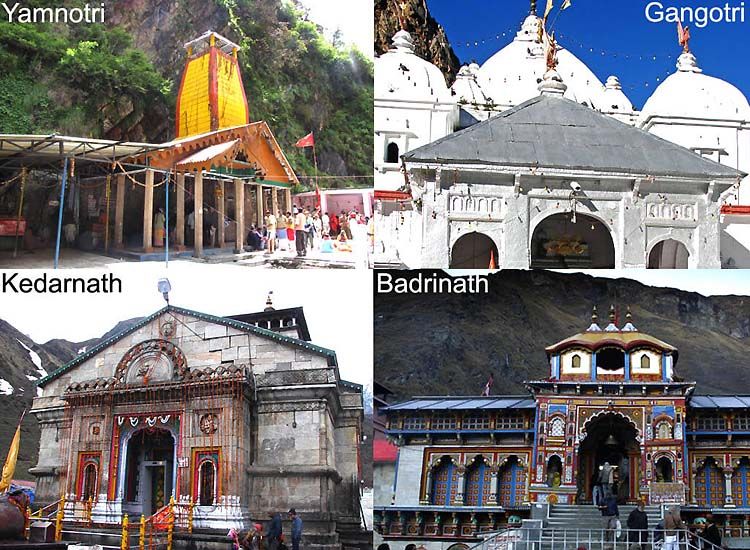
Covering four sacred shrines namely, Badrinath, Kedarnath, Yamunotri and Gangotri, the Chardham Yatra witnesses a huge number of devotees. The serene pilgrimage circuit in India starts from Yamunotri and ends at the Badrinath.
Offering a mystical retreat, the journey allows to appease Lord Vishnu and Shiva together with Goddess Yamuna and Ganga. The awe-inspiring beauty aids in successfully completing the arduous journey that passes through various hardships.
Starting and ending time of the Char Dham Yatra
The Char Dham Yatra begins from the day of Akha-Trij or Akha-Teej which usually falls in the month of May. Bhai-Bij (or Bhai Dooj) which is the second day after Diwali marks the end of Yatra.
Spiritual experiences
- Besides seeking the blessings, the pilgrims go for the Yatra to successfully purge their souls of all worldly demons.
- Offering prayers at the origin points of the two important rivers of India seem truly delightful.
- Worshipping one of the twelve Jyotirlingas at Kedarnath and the holy abode of Lord Vishnu at Badrinath is a heavenly experience.
Ideal Duration: It takes 10-12 days to visit all the temples.
Best time to go on the Char Dham Yatra
Mid-May to July and September – October is the best time to plan Yatra in order to avoid various climatic hazards. The salubrious weather offers Char Dham Yatra by Helicopter.
Kailash Mansarovar Yatra
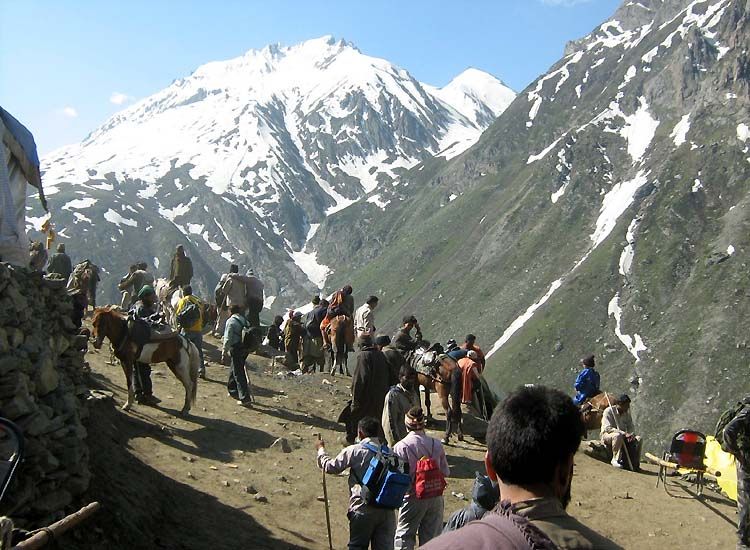
Even words fall short to describe the lure of the Kailash Mansarovar Yatra. Ranking amongst the most important pilgrimage sites in India, Mount Kailash and Man Sarovar Lake ooze an ethereal charm.
Another key point to note is that this life-changing spiritual tour in India is treasured by Hindus, Jains and Buddhists alike.
Dramatic Tibetan plateau, spellbinding views and the challenging trek make the expedition all the more enthralling. The holy journey ultimately results in a rendezvous with the Supreme Being.
Starting and ending time of the Kailash Mansarovar Yatra
The Kailash Mansarovar Yatra starts from June and runs till September. Spanning over 4 months, the journey enables devotees to get one step closer to Lord Shiva.
Spiritual experiences
- Gazing at the ‘Om Parvat’ at the time of sunrise is immensely soul-soothing.
- Reaching the holy abode of Lord Shiva after a difficult trek gives the much-needed satisfaction to the soul, heart and mind.
- Circumambulating Mount Kailash breathes a new life in you and also provides the zeal to live it fully.
Ideal Duration: Depending upon the route chosen, the Yatra may take 22, 19 or 12 days.
Best time to go on the Kailash Mansarovar Yatra
Because of the excellent visibility and stable weather, mid-May to mid-October is the best time to go for Kailash Mansarovar Yatra.
Plan a 10 Nights 11 Days Kailash Mansarovar Yatra by Helicopter
Amarnath Yatra
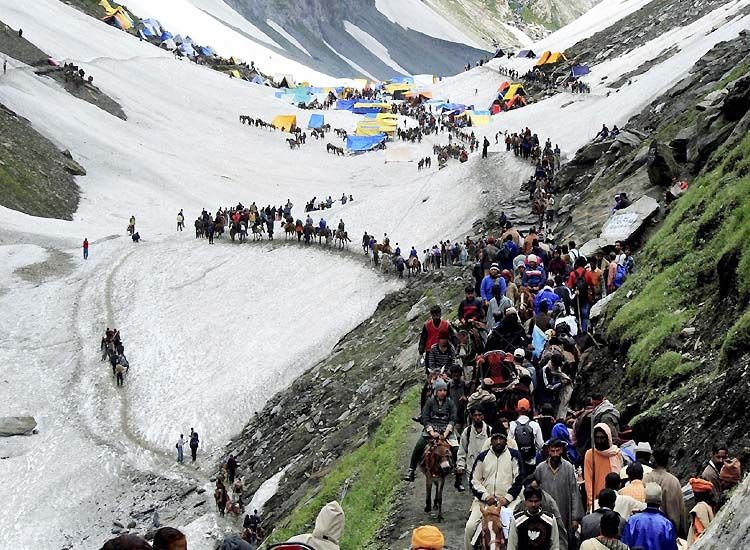
Amarnath Yatra is not just an ordinary pilgrimage, rather it is an unrivaled journey towards the divine. The trek to the holy Amarnath Cave is full of joy and thrill.
But, getting the ‘darshan’ of the naturally formed ice lingam in the cave leaves one with tears of happiness in the eyes. Besides this, whosoever undertakes the spiritual retreat find himself lost amidst the picturesque valleys, stunning views, gushing river, scenic lake, etc.
Starting and ending time of the Amarnath Yatra
Earlier the Yatra used to start in July and end in August on the day of Raksha Bandhan. The time period was around 30 days.
But, after receiving the overwhelming response from the devotees, the pilgrimage now usually starts from mid-June and runs till August. Due to this, followers of Lord Shiva get extra time to seek his blessings.
Spiritual experiences
- Spotting the ‘Sheshnaag’ Ji, holy snake of the Lord in and around the Sheshnaag Jheel is considered lucky.
-
Legends associated with each and every place you navigate during the Yatra keeps you engaged. Moreover, receiving a warm hospitality of the natives and the ‘langar walas’ who serve the devotees with full devotion is truly soul-stirring.
- True pilgrims get a glimpse of Lord Shiva in many of his forms in the ice lingam. The shape and height of lingam vary depending upon the phases of the moon.
Ideal Duration: If taken from the Pahalgam route, then the Yatra takes 5 days. Whereas it takes only 1 day from Baltal route. It is important to note that although it takes less time but the trekking trail from Baltal is not that easy.
Best time to go on the Amarnath Yatra
Undertaking the Amarnath Yatra during the starting days of its commencement is considered to be best. The reason for this is that you get to witness the ice lingam in its full formation during this time period.
Vaishno Devi Yatra
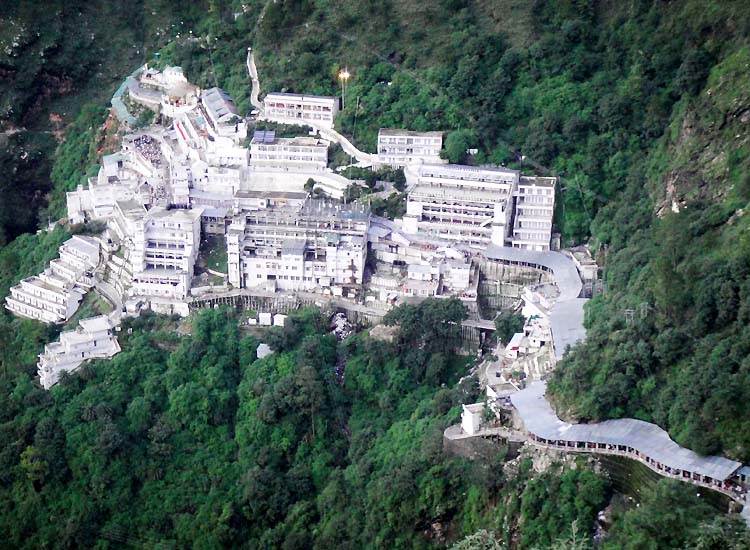
Comparatively easy than the aforementioned spiritual journeys in India, the Vaishno Devi Yatra is favored by many. Nestled at the Trikuta Mountains is the holy bhawan which houses the three incarnations of Goddess Durga in ‘pindi’ formation.
Representing Goddess Kali, Goddess Saraswati and Goddess Vaishnavi, these natural formations flaunt many folklores associated with them. Valleys reverberating with hymn and ‘Jaikaras’ (cheers) of the Goddess provides the desired relief during the exhilarating trek.
Starting and ending time of the Vaishno Devi Yatra
The Vaishno Devi Yatra runs throughout the year. There are no starting and ending dates for the same.
Spiritual experiences
- Traveling to Vaishno Devi during the Navratra festival is considered truly auspicious. However, it is the peak season of the Yatra and a huge number of devotees throng the destination.
- Watching the newly-wedded couples embarking on the pilgrimage with full devotion to pay gratitude for wish fulfillment is amazing. Furthermore, listening to people who have been benefited from the sojourn is a wonderful delight. This, further, makes one believe in the Goddess whole-heartedly.
- In spite of being perched on a height, the sacred cave lures millions of pilgrims every year for many reasons. Offering prayers at the ‘Grabh Joon’ in Ardhkuwari is a unique experience one must cherish definitely.
Ideal Duration: 3-4 days are enough to Vaishno Devi Yatra.
Best time to go on the Vaishno Devi Yatra
Although the Yatra remains open throughout the year. But, it is advisable not to visit during the summer, monsoon and the peak season. Furthermore, the months between December – February are really cold and sometimes the place may receive snowfall. Another key point to note, the original cave is thrown open to the public in winters. Having said that, the trip may be planned accordingly.
Kumbh Mela
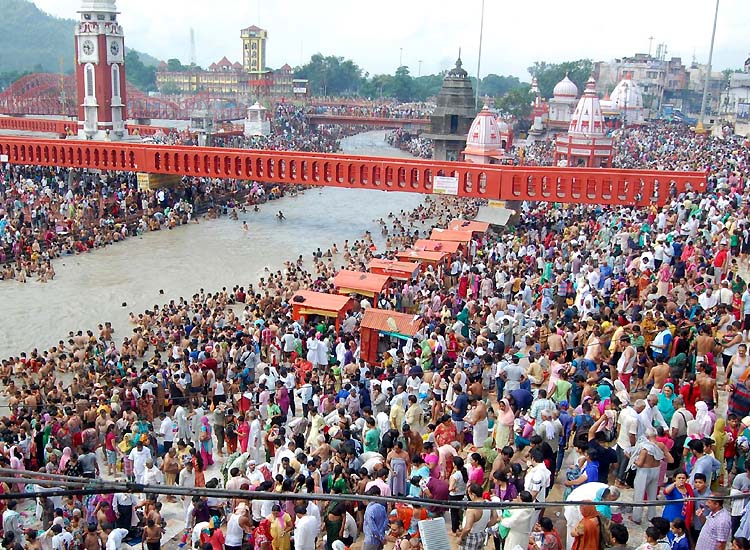
Taking place at the four sacred destinations along the banks of holy rivers, the Kumbh Mela is a much anticipated Hindu festival. A spiritual trip to India is incomplete without attending this one of the largest peaceful religious gatherings in the world.
As per the Hindu mythology, the four destinations i.e., Haridwar, Nashik, Ujjain and Allahabad (Prayagraj) are so chosen because the drops of nectar fell here. Interestingly, the exuberant fair has been inscribed on the UNESCO’s Representative List of Intangible Cultural Heritage of Humanity.
Starting and ending time of the Kumbh Mela
The exact date of the Kumbh Mela is determined, as per the Vikram Samvat calendar and the principles of Jyotisha.
Spiritual experiences
- Bathing in the Ganga, Godavari, Triveni (confluence of Ganga, Yamuna and Saraswati) and Shipra during Kumbh absolve all the sins.
-
Four types of Kumbh Mela are Kumbh Mela, Ardh Kumbh Mela, Purn Kumbh and Maha Kumbh. They are held after every three years, six years, twelve years and 144 years respectively. Participating in any of them helps to attain salvation.
- Shahi Snan (Special Bathing) are held on special occasions. During this time, millions of devotes urge to seek the holy dip. The presence of the Naga Sadhus, eminent priests, head of various akhadas, etc. raises the enthusiasm level.
Ideal Duration: It is said that 12 days of God is equal to 12 years of human beings. Thus, plan your trip for 12 days, if you can. Or else, you can simply complete the pilgrimage in just 1-2 days.
Best time to go for the Kumbh Mela
The Kumbh Mela receives huge footfall on the days of Shahi Snan. So, if you are not afraid of the huge crowd, you can visit any of those days. Or else, for an easy and comfortable journey, you can visit on any day during the Mela.
Book 2 Nights 3 Days Prayagraj Kumbh Mela
Mani Mahesh Lake Yatra
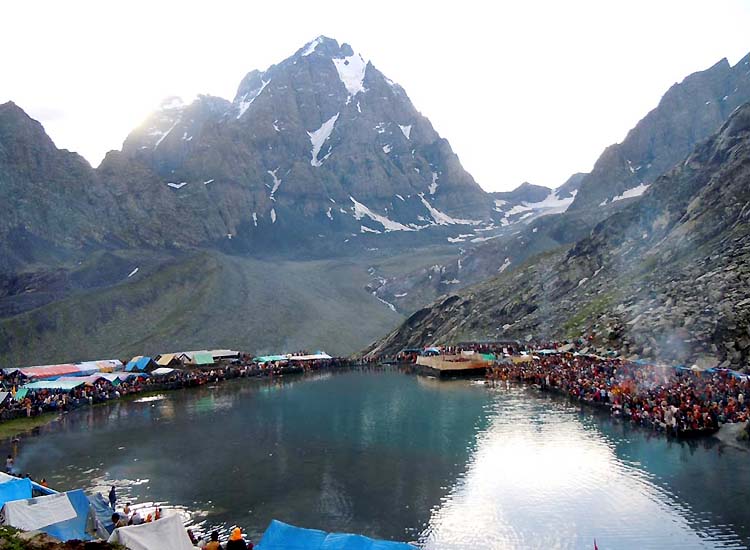
Tucked beautifully amidst the enigmatic lap of the Himalayas, the Manimahesh Lake casts a spell. The Mani Mahesh Lake Yatra is an expedition towards the lake and is as beguiling as the destination itself.
Offering a blissful spiritual traveling in India, the voyage passes through some of the most breathtaking trails. Various surprises like the changing climate after every half hour await you during the divine tour. Apart from this, taking a dip in the Gauri Kund and Shiva Krotri en route is definitely an otherworldly experience.
Starting and ending time of the Mani Mahesh Lake Yatra
Since time immemorial, the Mani Mahesh Lake Yatra is held from Krishna Janmashtami till Radha Ashtami. Both the occasions usually fall in the month of August to September. However, the demand to increase the number of days of the Yatra is voiced from time to time.
Spiritual experiences
-
According to the deep-rooted beliefs, Mount Kailash is considered as invincible. Nobody is able to conquer it till now. Thousands of folklores state that the people who tried to scale its height were turned into stone. Thus, it truly amusing to unveil the mysteries related to these legends.
-
Another highlight of the trip that grabs the attention is that the Kailash peak is visible only if the Lord is happy. Otherwise, due to bad weather, the peak remains hidden behind clouds while signifying Lord’s displeasure.
-
On a full-moon night, the moon rays fall on Lord’s crown and reflect the images of gem in the lake. Viewing glimpses of the gem (Mani) on Lord Shiva’s (Mahesh) crown in the lake is a sight to behold.
Ideal Duration: The Yatra requires a minimum of 3 days, including one-night stay en route at Dhancho.
Best time to go for the Mani Mahesh Lake Yatra
The Yatra is held only for 15 days, usually in the month of August or September. Hence, this is the best time to go on Mani Mahesh Lake Yatra.
Puri Rath Yatra
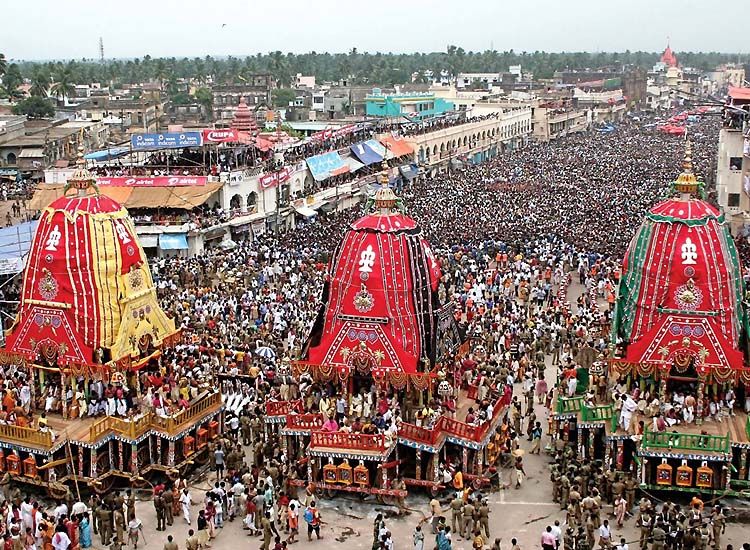
Have you seen millions of people gathering at a place for a chariot pulling ceremony? If not until now, then you must plan the Puri Rath Yatra. Celebrated with great zeal, the annual festival marks the days when Lord Jagannath is on a ‘holiday mode’.
He along with his siblings namely, Lord Balabhadra and Goddess Subhadra visit to his maternal aunt’s house. All this happens during the cultural fiesta in a way that is worth-witnessing. Scores of enthusiasts flock together to pull the huge ornate chariots carrying the idols of the three deities.
Starting and ending time of the Puri Rath Yatra
The festival is celebrated on the second day in the bright fortnight of Ashadha month (according to the Hindu calendar) which overlaps with the month of June or July. The festival takes place for 10 days.
Spiritual experiences
- The annual Rath Yatra allows everybody, even the foreigners and non-Hindus, who are otherwise not allowed in the temple, to catch a sight of the deities.
- The fiesta welcomes the devotees with earnest desire to help the priests in pulling the chariot of the deities. The procession begins from the Jagannath Puri Temple and goes till the Gundicha Temple.
- Services and traditions at Puri Rath Yatra remind of the tribal elements in rituals performed and preserved customs. Making of the Rathas is another attraction of the Yatra.
Ideal Duration: The Yatra culminates in 10 days. But the chariots are drawn only on one day. Thus, you can either stay there for 10 days or 2-3 days will be enough.
Best time to go for the Puri Rath Yatra
Spanning for 10 days, the festival usually falls in the month of June or July. Therefore, this is the best time to go on Puri Rath Yatra.
Nau Devi Yatra
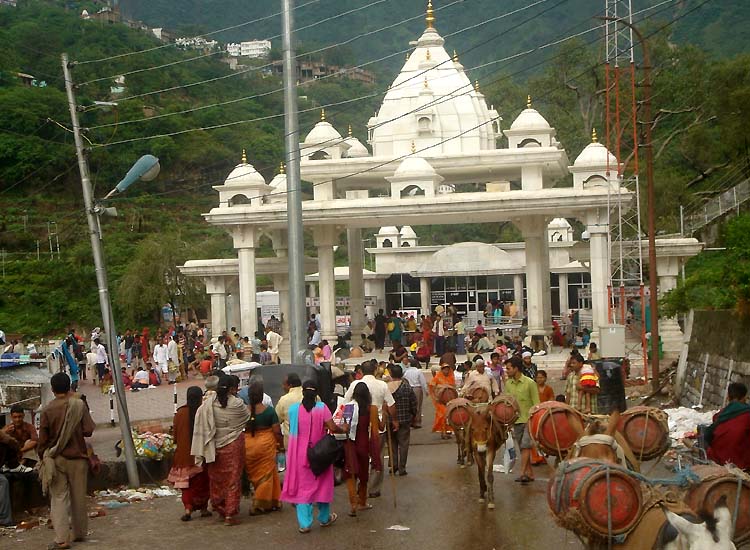
Known for innumerable incarnations, Goddess Durga generously bestows his keen devotees. Out of the many, devotees mainly worship the nine forms of the Devi. Nau Devi Yatra takes the pilgrims to nine earthly abodes of the Goddess sprawled over different parts of the country.
Most of them are amongst the 51 Shakti Peethas of the Goddess. The trip covers Mansa Devi Temple in Chandigarh, Nainadevi, Chintpurni, Sheetla Devi, Jwala Ji, Chamunda Devi, Maa Bhagula Mukhi and Kangra Devi temples in Himachal Pradesh and Vaishno Devi in Jammu & Kashmir.
Starting and ending time of the Nau Devi Yatra
The Nau Devi Darshan is a highly revered Indian pilgrim tour which runs throughout the year.
Spiritual experiences
- Revering the Goddess in her nine forms is a lifetime experience.
- The spiritual journey raises the respect level one has towards women. It further allows to celebrate the women empowerment by appeasing the Goddess.
- Additionally, the journey makes one sightsee some of the most amazing places in India.
Ideal Duration: In order to travel all the temples of the Goddess, one needs to spare at least eight days.
[ Explore Nau Devi Yatra Tour Packages]
Best time to go for the Nau Devi Yatra
Except for the monsoon (July-mid-September) and peak season (April and October), all other months are ideal to plan the trip.
These hand-picked pilgrim tours are just a few out of the many. There are many more eye-opening sojourns that one must undertake before it’s too late!
